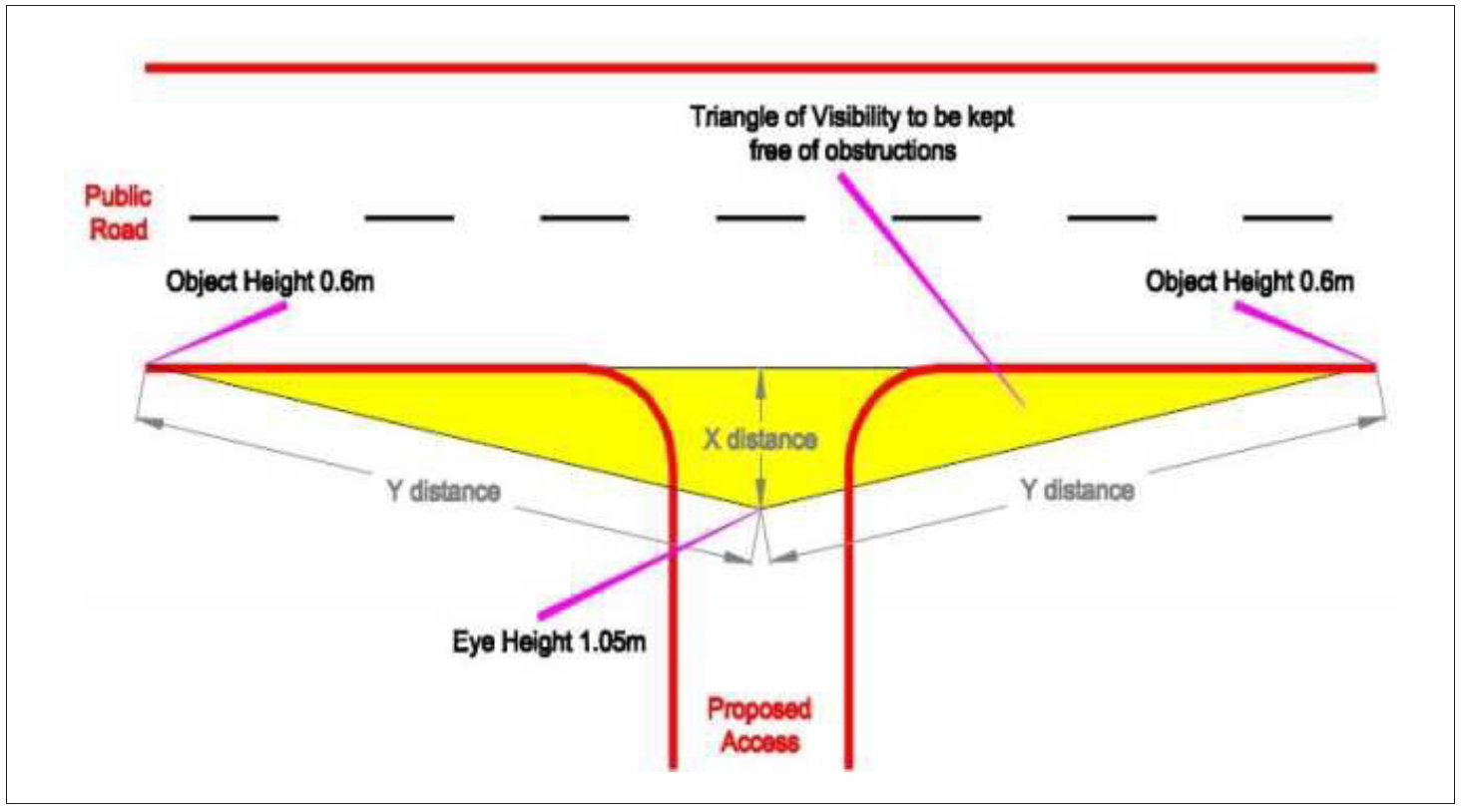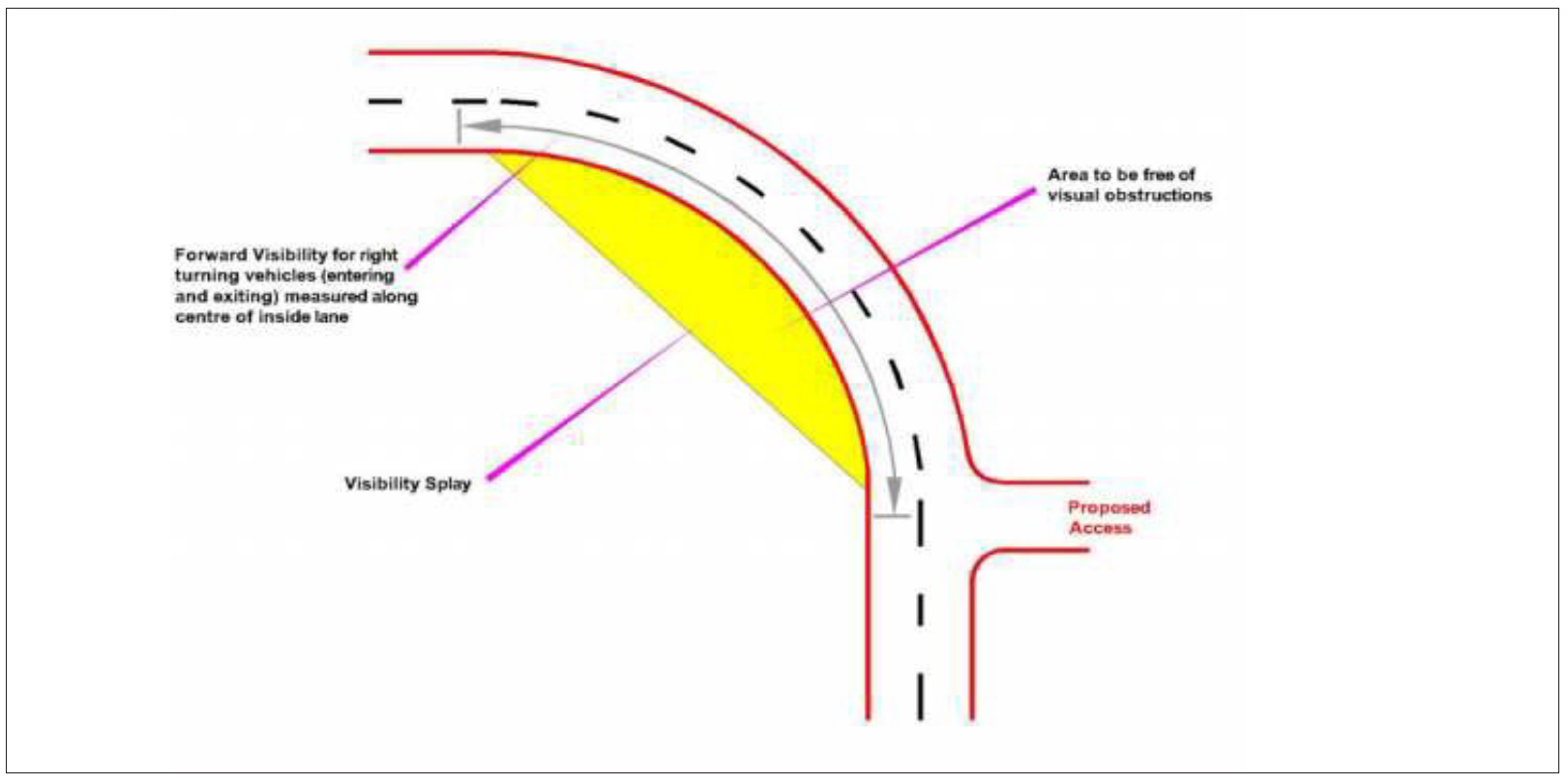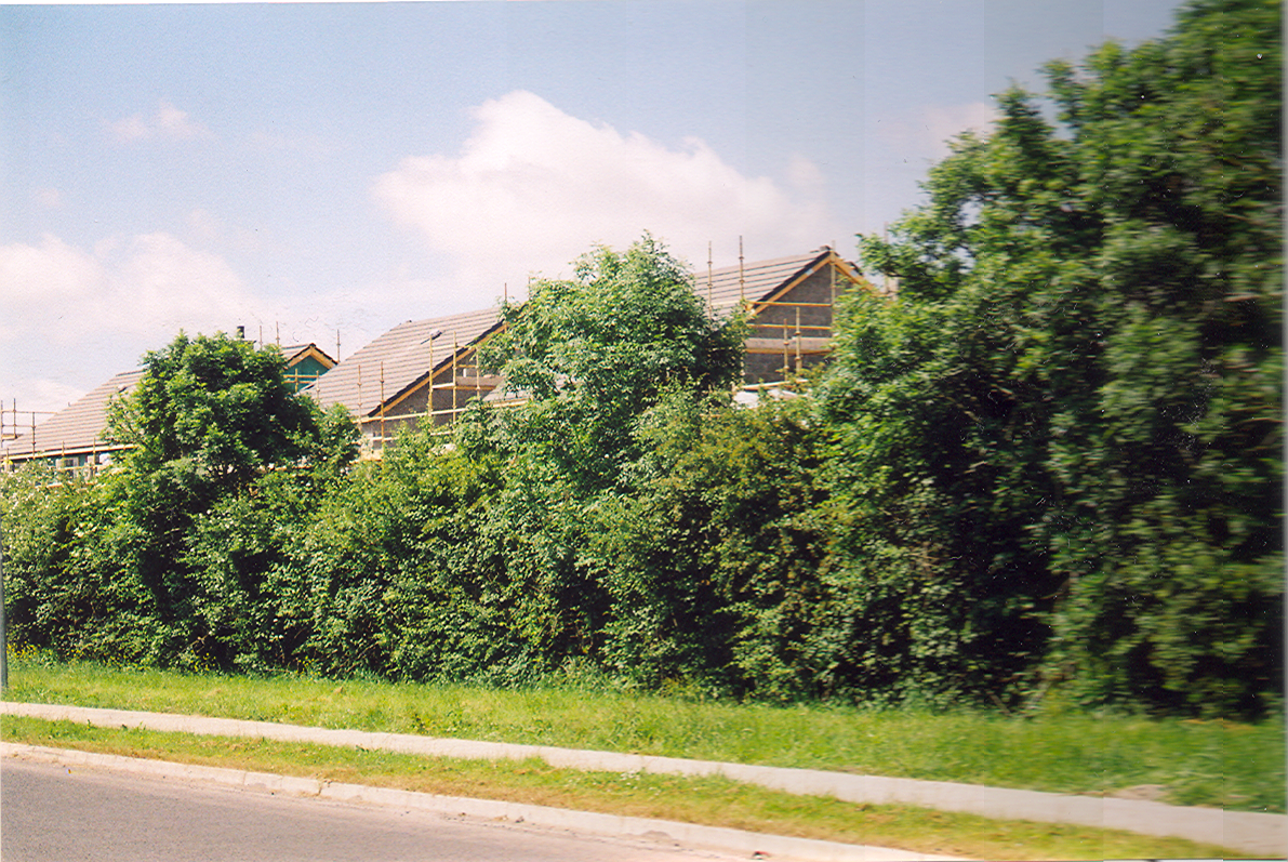Section 8.0 Roads Access Policy
8.1 National Roads
Planning applications that include access on to National Roads should accord with National policy set out in the Spatial Planning and National Roads Guidelines for Planning Authorities (DoECLG, 2012) and local policy set out in the Transport and Mobility Chapter of this Development Plan. There has been considerable financial investment in National Primary and National Secondary Routes in recent years, to increase their carrying capacity and to improve safety for road users. A multiplicity of entrances onto these routes would create a traffic hazard and reduce the carrying capacity of the routes significantly.

|
Development Management DM 45 |
|---|
|
It is therefore a policy of the Council to avoid the creation of any additional access point from new development or the generation of increased traffic from existing accesses to national roads to which speed limits greater than 60 kmh apply, in accordance with Government Policy as outlined within the Spatial Planning and National Roads Guidelines for Planning Authorities (2012) issued by the DoECLG. This provision applies to all categories of development including houses in rural areas, regardless of the housing circumstance of the applicant. |
8.2 Transitional Zones
Where the plan area incorporates sections of national roads on the approaches to or exit from urban centres that are subject to a speed limit of 60 kmh before a lower 50kmh limit is encountered – otherwise known as transitional zones – the plan may provide for a limited level of direct access to facilitate orderly urban development. Any such proposal must, however, be subject to a road safety audit carried out in accordance with the NRA’s requirements and a proliferation of such entrances, which would lead to a diminution in the role of such zones, must be avoided.

8.3 Lands adjoining National Roads within 50kmh speed limits
Access to national roads will be considered by the Planning Authority in accordance with normal road safety, traffic management and urban design criteria for built up areas. There will be a presumption against development within road reservation corridors, identified for National Road development.
8.4 Regional Roads (carrying capacity)
Regional roads carry large volumes of traffic and have received considerable investment in recent years, which has improved both the carrying capacity and the traffic safety on these roads. It is important that new housing in rural areas that is located along Non-National Routes is located in such a manner as to avoid endangering public safety by way of a traffic hazard. Regard should also be had to Policy Objectives in Section 5.10 of Volume 1. New proposals for housing along Regional Roads will be considered with a view to:
- Avoid unnecessary new accesses, where access could be provided off a nearby local road.
- Ensure that necessary new entrances are located in such a manner as to provide effective visibility for both users of the entrance and users of the public roads so that opportunities for conflicting movements are avoided, taking account of all relevant considerations such as traffic levels, typical vehicle speeds, plans for realignment.
- Avoid the premature obsolescence of regional and local roads, through creating excessive levels of individual entrances and increased traffic.
In this regard, no new proposed development that would require direct access onto a Regional Road shall be permitted, except where:
|
Development Management DM 46 |
|---|
|
8.5 Road Safety Audit & Traffic Impact Assessment
The Council shall require Road Safety Audits for development requiring the provision of a new vehicular access, or the alteration of an existing vehicular access point, onto a National Primary and National Secondary Route. Exemptions for the carrying out of Road Safety Audits for development requiring for single house developments may be made where Transport Infrastructure Ireland deem it unnecessary. A road safety audit may also be required for development with access onto non- national routes where the council deems it necessary. The current standard with regard to the submission of a Road Safety Audit is the National Road Authority publication DMRB HD19/09.
A Traffic Impact Assessment will be required to be submitted together with any development application, for developments likely to significantly impact on the road safety or significantly increase traffic movements in the general area.
All significant development proposals will be required to have transport and traffic assessments carried out in accordance with the publication Traffic Management Guidelines and the Traffic and Transport Assessment Guidelines (where the development affects a national road).
8.6 Sightline Requirements
Waterford City & County Council will require that all new developments proposing a new entrance or a significantly intensified existing access point onto the public road network shall comply with the relevant TII Publications/DMURS Guidelines. Listed in the Table 8.1 below are the general minimum sightline requirements the Council will require to be provided:
| Table 8. 1 Minimum Sightline Requirements | |||||
|
Category |
A |
B |
C |
D |
E |
|
Speed Limit Km per Hr |
100km/h |
80km/h |
60km/h Built up Areas |
50km/h Built Up Areas |
80km/h Local Roads |
|
Minimum Sight (Y) Distance |
215m |
160m |
90m |
70m |
55m |
|
Sightlines of 30 metres shall be required for dwellings accessing onto a cul-de-sac (serving not more than 3 dwellings). Where the cul-de-sac meets the major road, sightlines pertaining to that road must also be achieved. |
|||||
8.7 Sightline Provisions
Clear and unobstructed sightlines (as denoted by Y in the diagram) shall be provided, in each direction, from a point:
- 4.5m (housing estates/commercial or industrial developments); or
- 2.4m (single dwellings).
Back from the nearside edge of the roadway at the centre of the entrance to a point to the left and right on the nearer edge of the major road running carriageway (which includes the hard shoulder), at a distance given in Table 8.1. For the distance outlined in this table, the road boundary fence shall be set back behind the sightlines so as to accommodate this requirement.
Sightlines should allow for similar inter-visibility between vehicles entering or approaching the site or other vehicles on the road. Should it be necessary to modify roadside boundaries outside of the designated site area, a letter of agreement in this regard will be required from the relevant landowner. The appropriate eye (1.05m and 2.0m) and object heights of 0.26m and 2.0m respectively, above road surface shall be used.

Figure 8. 1 Sightline Configuration

Figure 8. 2 Forward Visibility Configuration
8.8 DMURS
In urban areas inside the 60km/h urban speed limit, developers should also have regard to the best practice standards set out in the Design Manual for Urban Roads & Streets (DMURS) 2020.
|
Development Management DM 47 |
|---|
|
The design of urban streets in Ireland is governed by DMURS which is mandatory for all urban roads and streets within the 60 km/h urban speed limit zone except for:
The Council will require that all new development or the intensification of existing entrances onto the public road network is provided for in a safe manner in accordance with the current Transport Infrastructure Ireland publications. |
8.9 Hedgerow Protection
The removal of roadside ditches and hedges should be avoided, and existing roadside hedgerows and trees should be retained as much as possible. Any new/ proposed entrance should be carefully considered to achieve the required sight distance with the removal of a minimum extent of existing hedgerow. Where satisfactory access can be achieved only by removing large stretches of roadside hedgerow/ditches/stone boundaries, the Council will require that the roadside boundary is replaced with a new hedgerow, formed from native and naturalised species.

To protect the integrity of hedgerows, the Council will require that:
|
Development Management DM 48 |
|---|
|
Replacement of natural hedgerow boundaries by ornamental shrub planting is discouraged as it suburbanises what was a rural area, and exposes new development to loss of natural screening and also causes loss of biodiversity. To adhere to the provisions of Section 40 of the Wildlife Act 1976 as amended by the Wildlife (Amendment) Act 2000, hedge cutting shall not be carried out during the bird nest season from March 1st to August 31st.